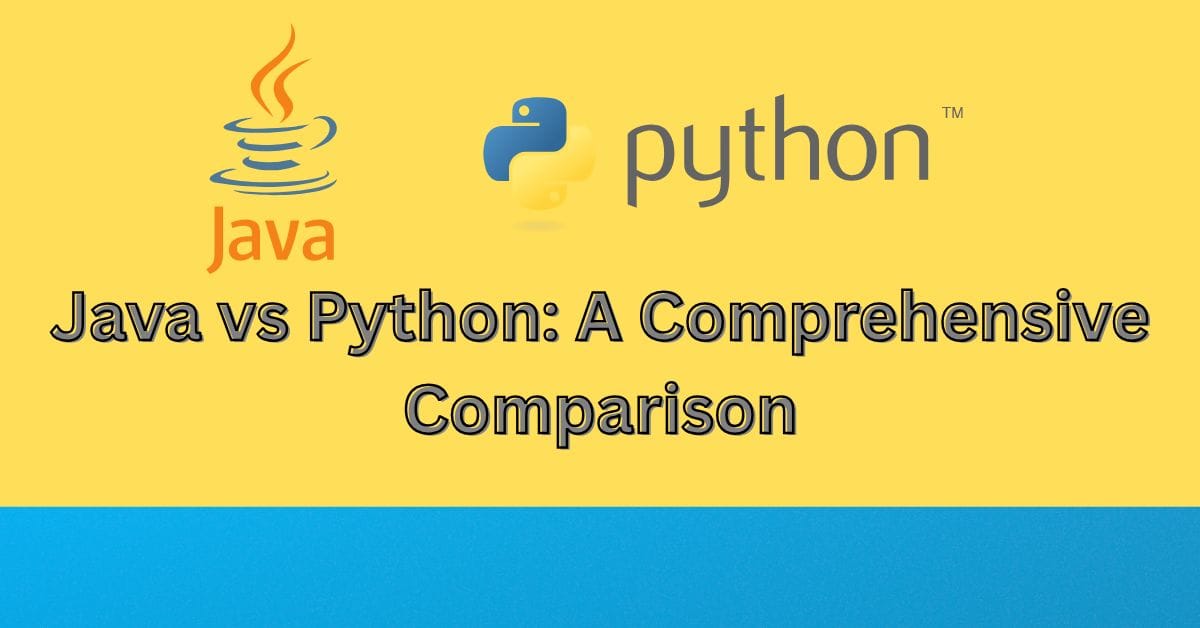|
Getting your Trinity Audio player ready... |
Java: An In-Depth Overview
What is Java?
Java has been around since the mid-1990s. Created by Sun Microsystems (now owned by Oracle), it was designed to create code that works everywhere. The core idea behind Java is “Write Once, Run Anywhere” (WORA). This means if you write your code in Java, it can run on any device with a Java Virtual Machine (JVM). Java remains a top choice for many big businesses today.
Advantages of Java
- Platform Independence and Portability: Java code runs seamlessly on different devices and operating systems.
- Performance Efficiency and Scalability: Java’s speed and ability to handle large workloads make it perfect for enterprise apps.
- Robustness, Security, and Type System: Java has built-in safety features, reducing bugs and security issues.
- Large Ecosystem and Libraries: Thousands of libraries and frameworks support Java development, making it easier to find tools and resources.
Limitations of Java
- Verbosity and Complex Syntax: Writing Java code often takes more lines, making it less user-friendly.
- Slower Development Speed: Building projects can take longer due to its strict syntax.
- Memory Use and Performance Trade-offs: In some cases, Java consumes more memory, which might affect performance in resource-limited environments.
Python: An In-Depth Overview
What is Python?
Python was created in the late 1980s by Guido van Rossum. Its main focus is simplicity and readability, making it a favorite for beginners. Python code is clear and easy to understand, which speeds up development cycles significantly.
Advantages of Python
- Easy-to-Read Syntax: Python’s clean code allows developers to write fewer lines and understand code faster.
- Versatility: Use Python for web apps, data analysis, automation, and even machine learning.
- Rich Libraries and Community: Whether it’s data science or web development, Python has many ready-to-use tools.
- Compatibility with Modern Tech: Python fits well with AI, IoT, and automation projects, making it highly adaptable.
Limitations of Python
- Slower Execution Speed: Since Python is interpreted, it often runs slower than Java.
- Less Ideal for High-Performance Tasks: When speed and resource use matter most, Python may fall short.
- Dynamic Typing Risks: Its flexible nature can lead to errors at runtime if not managed carefully.
Performance and Efficiency: Java vs Python
Execution Speed
Java generally outperforms Python in speed, especially in server-side and large-scale projects. Real-world benchmarks show Java’s better performance in handling high-throughput applications. Python’s slower speeds can be a hurdle in apps that need instant responses, though there are ways to improve this with optimization.
Memory Management
Java uses a sophisticated garbage collector, which helps manage memory efficiently. Python’s memory handling is simpler but can sometimes lead to increased memory use. For apps that need to handle a lot of data without crashing, Java offers better stability.
Suitability for High-Performance Computing
Java is often used in finance, banking, and Android apps because of its speed and ability to process big data. Python excels at data science and AI tasks but may need extra tools or hardware acceleration to match Java’s performance in demanding environments.
Use Cases and Industry Applications
Java’s Major Use Cases
- Enterprise back-end systems for banks and companies
- Mobile apps on Android devices
- Large systems like stock trading platforms and banking software
Python’s Major Use Cases
- Data science, machine learning, and AI projects
- Building websites with frameworks like Django and Flask
- Automation scripts that help with IT tasks or data collection
Real-World Examples
JP Morgan Chase uses Java for its banking systems because of its reliability. Instagram relies on Python for data analysis and backend services, giving quick updates and great user experience for millions.
Learning Curve and Developer Community
Java
Java’s syntax can be tough for newcomers, but many resources, courses, and certification programs make learning easier. Its large industry presence means plenty of support and job opportunities.
Python
Python’s simple syntax makes it an excellent choice for beginners. The active community provides free resources, open-source projects, and tutorials that can jumpstart your coding journey. It’s especially popular in startups and educational settings.
Tips for Developers
If you come from a simple coding background or want faster learning, Python could be the way to go. For those seeking stability and enterprise skills, Java is a solid long-term choice. Think about your career goals when choosing between these languages.
Future Outlook and Trends
Java’s Future
Java continues to evolve with new features like Java 21. It will remain vital in Android development and large business applications. Companies trust its robustness and security, so Java’s role isn’t fading anytime soon.
Python’s Future
With AI and data science booming, Python’s popularity is growing fast. Improvements in speed and efficiency are making it more competitive. Expect Python to stay at the forefront of emerging tech for years to come.
Industry Predictions
The job market for both languages is expected to remain strong. Java’s enterprise and Android roots will keep it in demand. Python’s role in AI, automation, and web development promises new job opportunities and projects.
Conclusion
Java and Python are both powerful, but they serve different needs. Java offers speed, scalability, and stability—perfect for big, complex applications. Python provides simplicity, speed of development, and a broad range of tasks, especially in data and AI. Your choice depends on your project goals and long-term plans.
Staying flexible and learning both can give you an edge in today’s shifting tech landscape. Keep updating your skills and adapt to new trends. That way, you’ll always be ready for the next big project or opportunity.
Key Takeaways
- Java suits high-performance, large-scale, enterprise applications.
- Python’s ease of use makes it ideal for rapid development, especially in data science and AI.
- Both languages are here to stay, but pick the one that aligns best with your project needs and career ambitions.
Python Backend Developer Roadmap: A Step-by-Step Guide
How to Use Machine Learning in Web Apps
5 AI Tools Revolutionizing Web Development
Arsalan Malik is a passionate Software Engineer and the Founder of Makemychance.com. A proud CDAC-qualified developer, Arsalan specializes in full-stack web development, with expertise in technologies like Node.js, PHP, WordPress, React, and modern CSS frameworks.
He actively shares his knowledge and insights with the developer community on platforms like Dev.to and engages with professionals worldwide through LinkedIn.
Arsalan believes in building real-world projects that not only solve problems but also educate and empower users. His mission is to make technology simple, accessible, and impactful for everyone.



